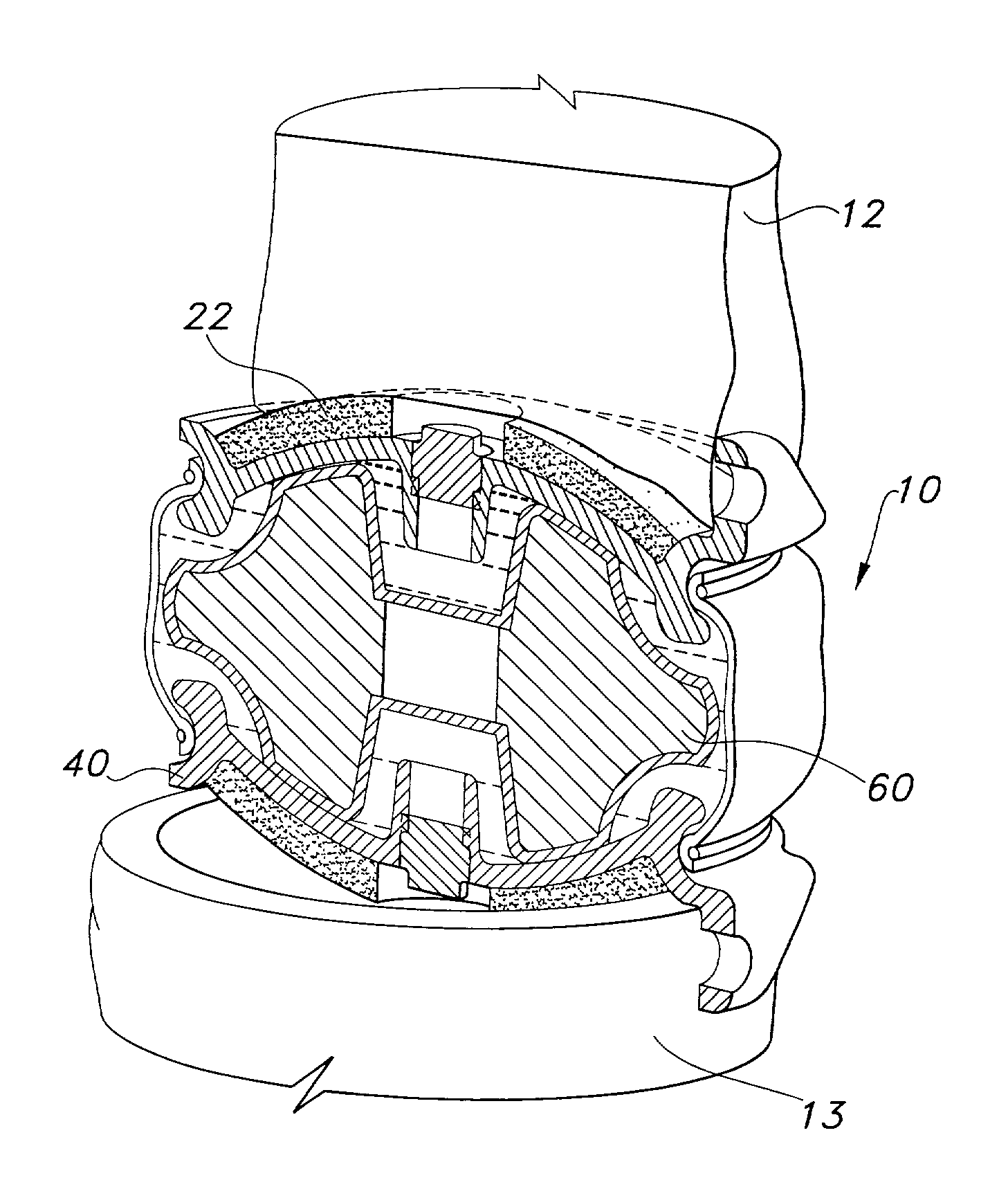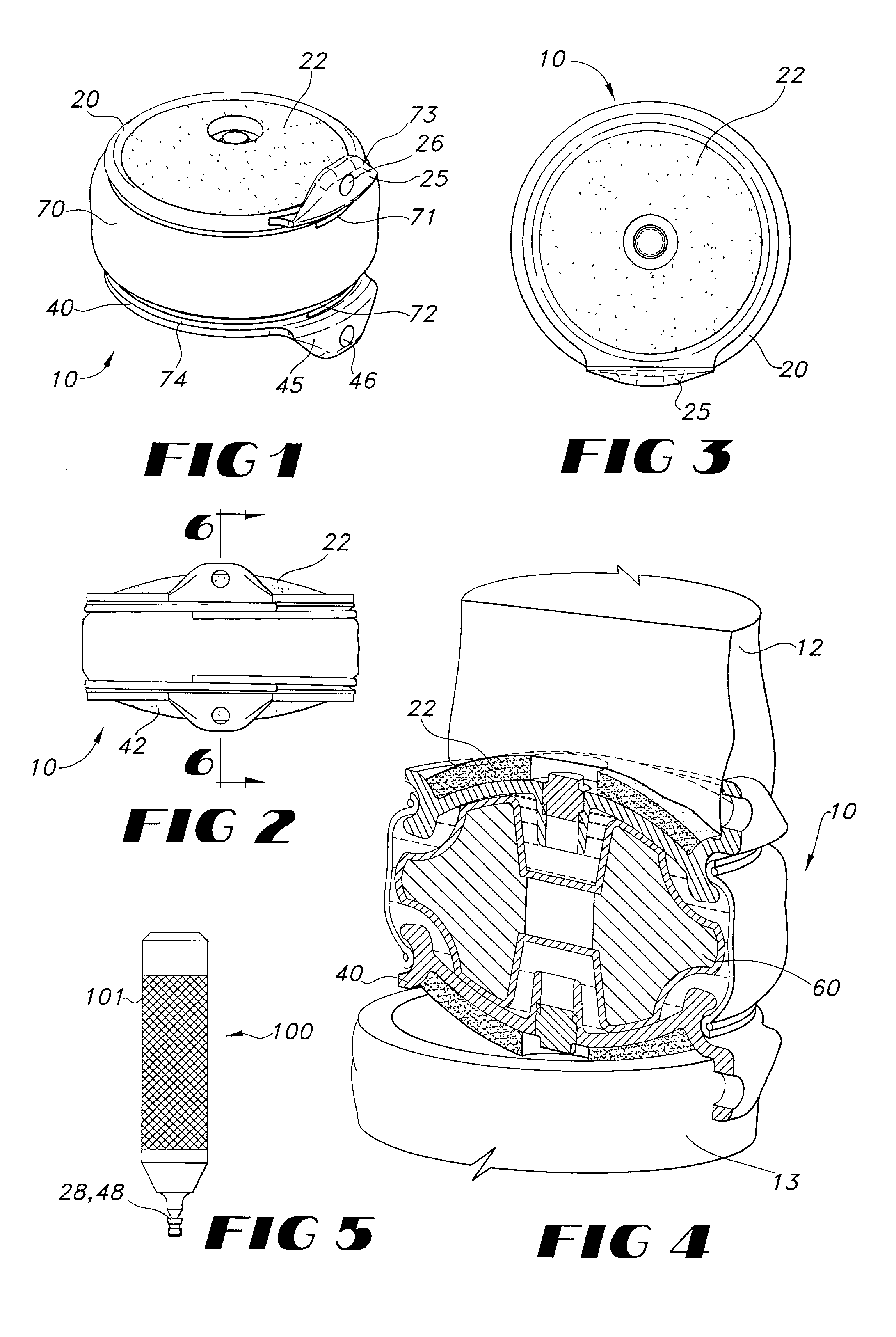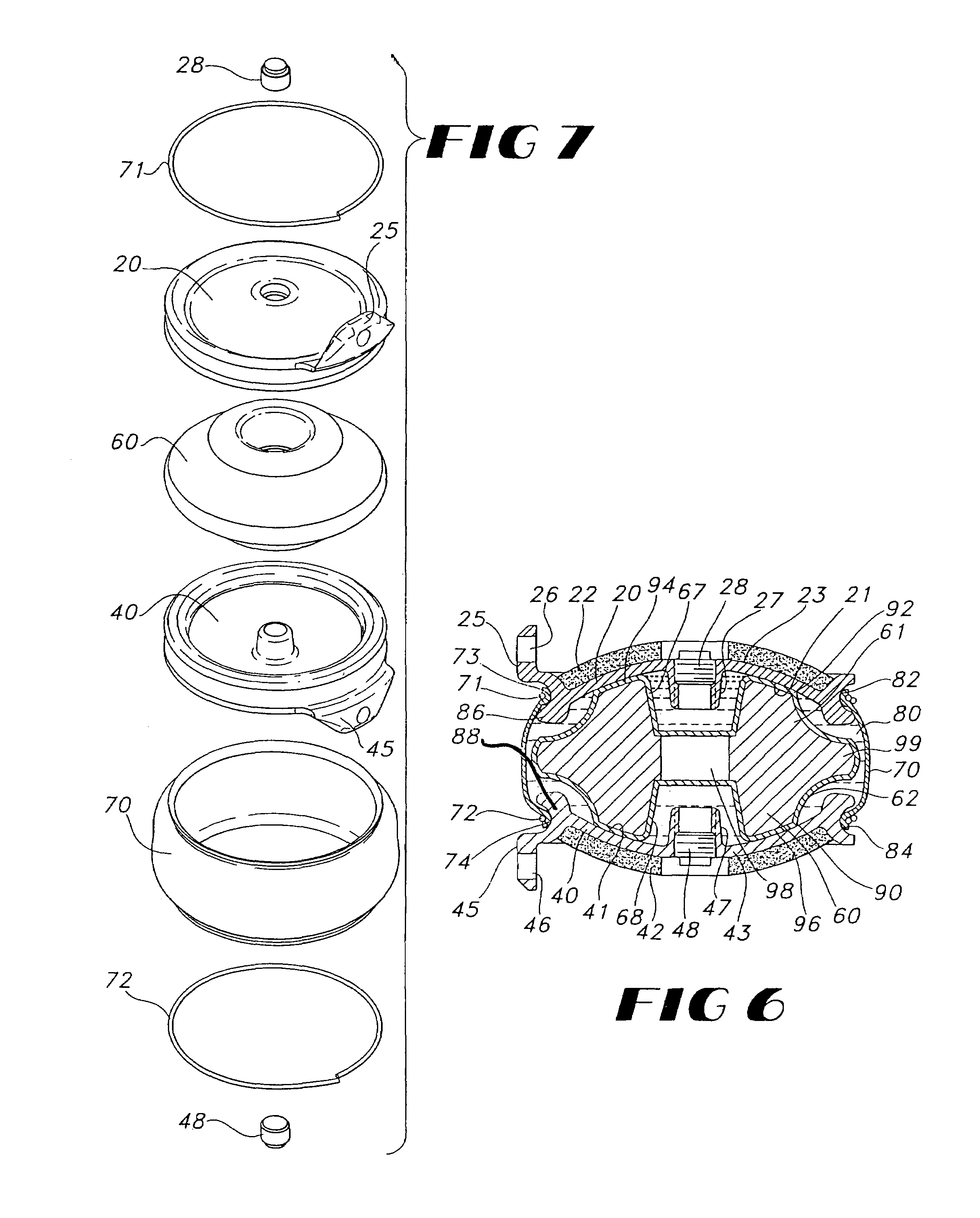Implantable joint prosthesis
a joint prosthesis and implant technology, applied in the field of implantable prostheses, can solve the problems of reducing the likelihood of further joint degeneration in adjacent joints, and achieve the effects of reducing the range of motion, improving condition and quality of life, and reducing the difficulty of implant design
- Summary
- Abstract
- Description
- Claims
- Application Information
AI Technical Summary
Benefits of technology
Problems solved by technology
Method used
Image
Examples
Embodiment Construction
[0064]In broad aspect, the size and shape of the implant are substantially variable, and this variation will depend upon the joint geometry. Moreover, implants of a particular shape can be produced in a range of sizes, so that a surgeon can select the appropriate size prior to or during surgery, depending upon his assessment of the joint geometry of the patient, typically made by assessing the joint using CT, MRI, fluoroscopy, or other imaging techniques.
[0065]The rigid opposing plates or shells can be made of any rigid, biocompatible material, but are generally made of a biocompatible metal, such as stainless steel, cobalt chrome, ceramics, such as those including Al2O3 or Zr2O3, or titanium alloy. ASTM F-136 titanium alloy has been found to be particularly suitable. As indicated above, the outer surface of the rigid opposing plates or shells are rough, in order to restrict motion of the shells relative to the bone surfaces that are in contact with the plates. This is particularly ...
PUM
| Property | Measurement | Unit |
|---|---|---|
| thickness | aaaaa | aaaaa |
| thickness | aaaaa | aaaaa |
| thickness | aaaaa | aaaaa |
Abstract
Description
Claims
Application Information
 Login to View More
Login to View More - R&D
- Intellectual Property
- Life Sciences
- Materials
- Tech Scout
- Unparalleled Data Quality
- Higher Quality Content
- 60% Fewer Hallucinations
Browse by: Latest US Patents, China's latest patents, Technical Efficacy Thesaurus, Application Domain, Technology Topic, Popular Technical Reports.
© 2025 PatSnap. All rights reserved.Legal|Privacy policy|Modern Slavery Act Transparency Statement|Sitemap|About US| Contact US: help@patsnap.com



